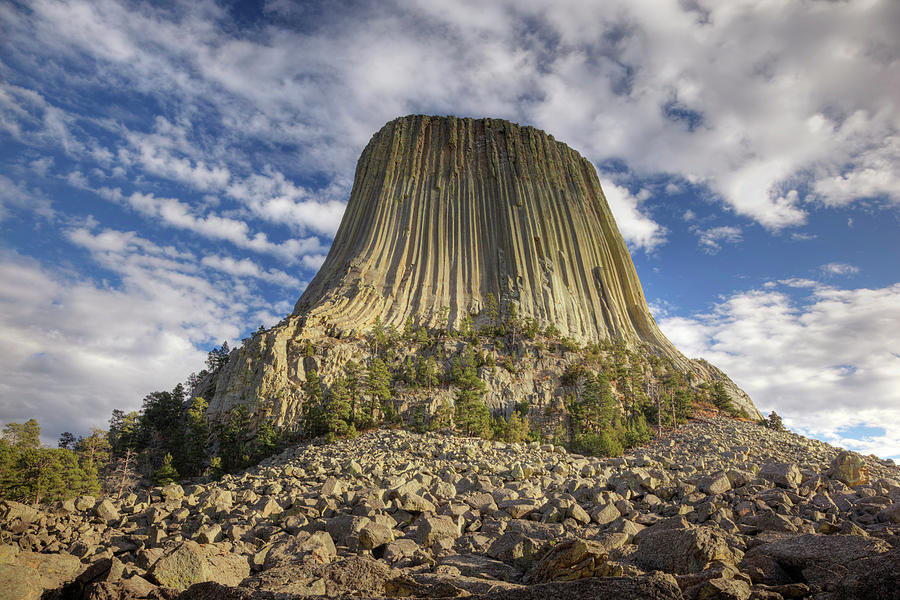
Devils Tower owes its impressiveness to its resistance to erosion as compared with the surrounding sedimentary rocks, and to the contrast of the somber color of the igneous column to the brightly colored bands of sedimentary rocks. The Tower is believed to have been formed by the intrusion of magma into the sedimentary rocks, and the shape of the igneous mass formed by the cooled magma is believed to have been essentially the same as the Tower today. Beyond this distance, they dip at 2 deg - 5 deg from the Tower. Within 2,000 to 3.000 feet of the Tower, the strata for the most part dip at 3 deg - 5 deg towards the Tower.


The Kiowa tribe, however, refers to Devils Tower as either Aloft on a Rock or Tree Rock. The area of its tear-drop shaped top is 1.5 acres. According to the Kiowa, it was Devis Tower that was left behind. The Tower rises 867 feet from its base and stands 1,267 feet above the river and 5,112 feet above sea level. Stargaze and experience the wonder of the night sky at Devils Tower National Monument. Over millions of years, erosion of the sedimentary rock exposed Devils Tower and accentuated Little Missouri Buttes. Visitors can also attend ranger-led talks and demonstrations that explore the rich history of the area. The formations have been only slightly deformed by faulting and folding. Learn about the cultural significance of Devils Tower to Native American tribes such as the Lakota, Cheyenne, and Kiowa. The Sundance formation consists of the Stockade Beaver shale member, the Hulett sandstone member, the Lak member, and the Redwater shale member. These rocks, in aggregate about 400 feet thick, include, from oldest to youngest, the upper part of the Spearfish formation, of Triassic age, the Gypsum Spring formation, of Middle Jurassic age, and the Sundance formation, of Late Jurassic age. footprints that insects and reptiles of the Paleozoic Era left behind. The hills in the vicinity and at the base of the Tower are composed of red, yellow, green, or gray sedimentary rocks that consist of sandstone, shale, or gypsum. Discover Devils Tower in Devils Tower, Wyoming: The first declared National Monument in the United States.

Vertical joints divide the rock mass into polygonal columns that extend from just above the base to the top of the Tower. It is composed of a crystalline rock, classified as phonolite porphyry, that when fresh is gray but which weathers to green or brown. Devils Tower is a steep-sided mass of igneous rock that rises above the surrounding hills and the valley of the Belle Fourche River in Crook County, Wyo.


 0 kommentar(er)
0 kommentar(er)
